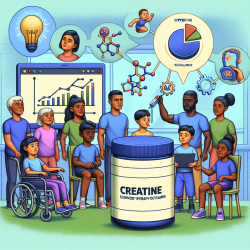Introduction
Youth engagement in health research is a growing field that holds immense potential for improving health outcomes and empowering young individuals. The systematic review by Sanchez et al. (2024) provides a comprehensive overview of the theories, models, and frameworks used to engage youth in health research. This blog aims to translate these findings into actionable insights for practitioners, particularly those involved in online therapy services for schools, like TinyEYE. By leveraging these frameworks, practitioners can enhance their engagement strategies and contribute to better health outcomes for children.
Key Findings from the Systematic Review
The review identified 16 papers that utilized various theories, models, and frameworks for youth engagement in health research. These were categorized into four primary types:
- Power-focused frameworks: These frameworks emphasize the distribution of power between youth and adults in research settings. They aim to ensure that youth have a significant role in decision-making processes.
- Process-focused frameworks: These frameworks identify barriers and facilitators to youth engagement and provide recommendations for maintaining research integrity and maximizing benefits.
- Impact-focused frameworks: These frameworks explore the short- and long-term impacts of youth engagement in research, emphasizing the importance of evaluating outcomes at both individual and systems levels.
- Equity-focused frameworks: These frameworks challenge conventional research methods and advocate for alternative approaches that prioritize health equity and the inclusion of diverse perspectives.
Implementing Frameworks in Practice
For practitioners, particularly those providing online therapy services, implementing these frameworks can enhance the effectiveness of youth engagement strategies. Here are some actionable steps:
- Adopt a power-sharing approach: Ensure that youth have a voice in decision-making processes. This can be achieved by involving them in the design and implementation of therapy programs, thereby increasing their sense of ownership and commitment.
- Focus on process optimization: Identify and address barriers to engagement, such as technological challenges or lack of access to resources. Utilize process-focused frameworks to streamline engagement activities and improve communication with youth.
- Evaluate impact: Regularly assess the outcomes of engagement activities to understand their effectiveness. Use impact-focused frameworks to measure both immediate and long-term benefits for youth and the community.
- Promote equity and inclusion: Ensure that engagement strategies are inclusive and consider the diverse backgrounds and experiences of youth. Equity-focused frameworks can guide the development of culturally sensitive and accessible programs.
Encouraging Further Research
While the review provides a solid foundation, there is a need for further research to refine and expand existing frameworks. Practitioners are encouraged to contribute to this growing field by documenting their experiences and sharing insights from their practice. Collaborative efforts between researchers and practitioners can lead to the development of more robust and effective engagement strategies.
Conclusion
The systematic review by Sanchez et al. highlights the evolving landscape of youth engagement in health research. By adopting data-driven frameworks, practitioners can enhance their engagement strategies and contribute to better health outcomes for children. To delve deeper into the original research, please follow this link: A systematic review of theories, models and frameworks used for youth engagement in health research.










